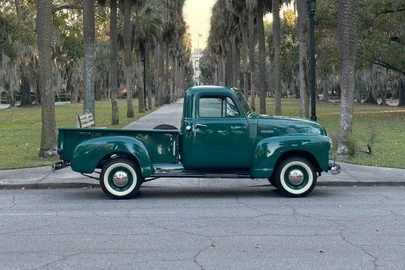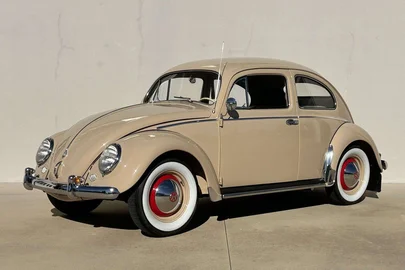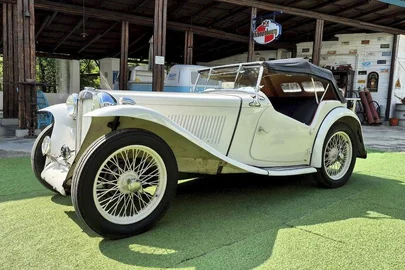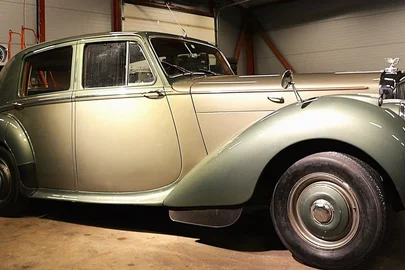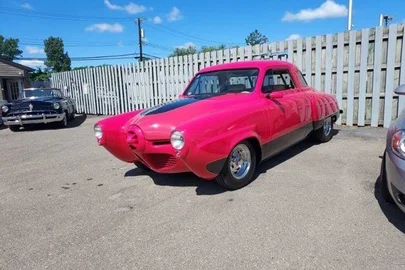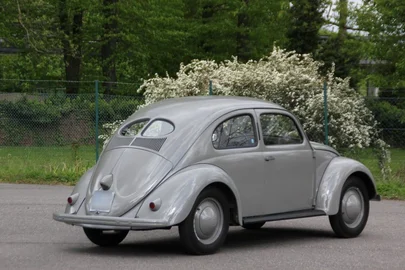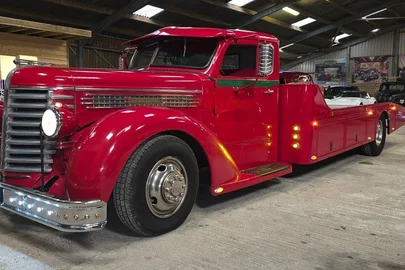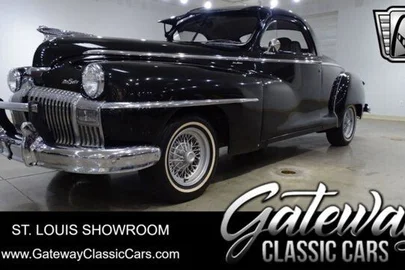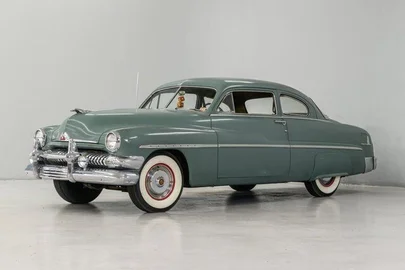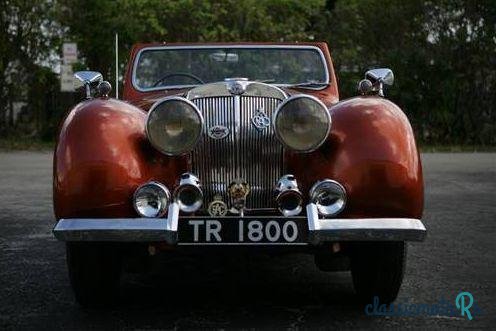
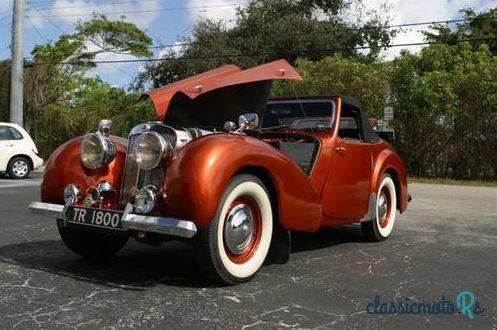
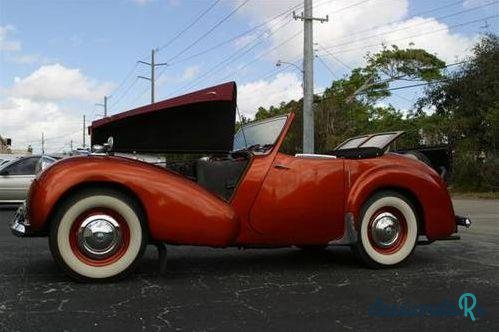
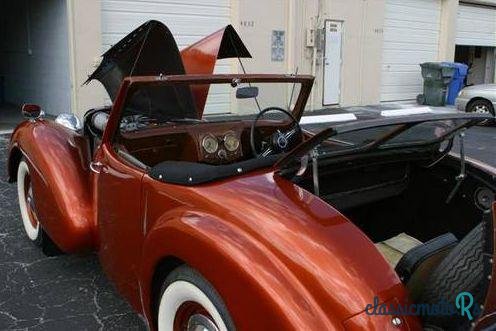
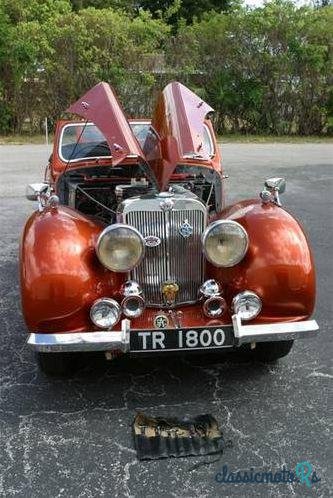
5 foto
1948' Triumph 1800
Diese Anzeige melden!Bewerte!Lesezeichen setzen
$32,600Veröffentlicht 17 Januar 2017ID: aSVSev
Abgelaufen
8 Jahre, 11 Monate her
8 Jahre, 11 Monate her
Information from the owner
Karosserie: Sportwagen
Alter: 69 Jahre
Außenfarbe: Schwarz
Verkäuferkommentare zu 1948' Triumph 1800
This is the most reliable original 1800. We have owned this car for over 17 years and enjoy driving it around town and on special events. The motor was rebuilt and has 450 miles on it since. The car has been appraised by an independent appraiser with a high 3 rating. The car has British Heritage Certification with matching Frame and Engine numbers. All parts have been acquired through the Triumph Roadster Club and the late Tony Butterfield. We have been slowly up grading the Chrome works on this car the front bumpers are redone.
History of the 1800:
The Triumph Roadster was built by Britain's Standard Motor Company from 1946 to 1949, and was first available as the Triumph 1800 Roadster (18TR) from 1946 to 1948 and subsequently as the Triumph 2000 Roadster (TRA) from 1948 to 1949.
The 1800 Roadster, model number 18TR, was designed in the closing days of World War ll. Triumph had been bought by the Standard Motor Company in 1944, and with all eyes to the future, the managing director of Standard, Sir John Black, wanted a sports car to take on Jaguar. At Black's insistence it was fitted with a dickey seat, probably the last series production car to be so attired. The overall design and ergonomics meant the Roadster was more comfortable and commodious than the XK120, making it an ideal long-legged touring car. It really was a 'best of both worlds' model, with its elegant styling combining with many modern advancements and innovations.
Early post-war steel shortages meant that the Roadster body (apart from its steel wings) was built from Birmabright aluminum alloy, almost certainly left over from aircraft production. This lightweight and durable bodywork combined with a marine-spec ash frame and a reassuringly robust tubular steel chassis that had a high corrosion resistance due to its significant chrome content. The engine was a 1776cc, 4-cylinder overhead-valve unit, developing 65bhp, and had a lot in common with the engine built by Standard exclusively for the Jaguar SS. A four-speed, right-hand column-change was used, which allowed the middle seat passenger to sit in comfort. Braking performance was impressive, benefitting from a Bugatti-designed, direct-acting master cylinder, whilst being hydraulically self-adjusting.
History of the 1800:
The Triumph Roadster was built by Britain's Standard Motor Company from 1946 to 1949, and was first available as the Triumph 1800 Roadster (18TR) from 1946 to 1948 and subsequently as the Triumph 2000 Roadster (TRA) from 1948 to 1949.
The 1800 Roadster, model number 18TR, was designed in the closing days of World War ll. Triumph had been bought by the Standard Motor Company in 1944, and with all eyes to the future, the managing director of Standard, Sir John Black, wanted a sports car to take on Jaguar. At Black's insistence it was fitted with a dickey seat, probably the last series production car to be so attired. The overall design and ergonomics meant the Roadster was more comfortable and commodious than the XK120, making it an ideal long-legged touring car. It really was a 'best of both worlds' model, with its elegant styling combining with many modern advancements and innovations.
Early post-war steel shortages meant that the Roadster body (apart from its steel wings) was built from Birmabright aluminum alloy, almost certainly left over from aircraft production. This lightweight and durable bodywork combined with a marine-spec ash frame and a reassuringly robust tubular steel chassis that had a high corrosion resistance due to its significant chrome content. The engine was a 1776cc, 4-cylinder overhead-valve unit, developing 65bhp, and had a lot in common with the engine built by Standard exclusively for the Jaguar SS. A four-speed, right-hand column-change was used, which allowed the middle seat passenger to sit in comfort. Braking performance was impressive, benefitting from a Bugatti-designed, direct-acting master cylinder, whilst being hydraulically self-adjusting.
